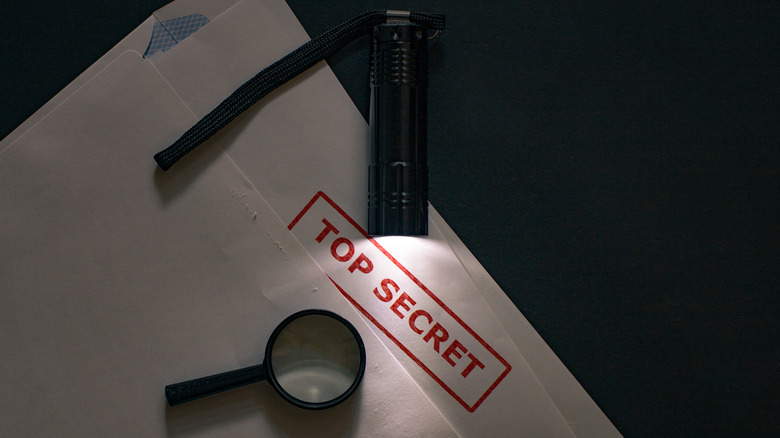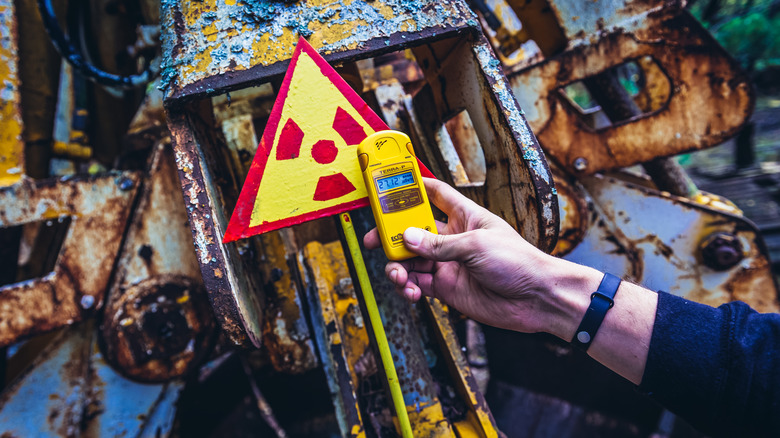Apple May Have Helped The U.S. Government Build A Secret Geiger Counter Out Of An iPod
Let's be honest here. The headline that one of the wealthiest companies in the world helped one of the world's richest countries build a top-secret gizmo that detects and measures ionizing radiation inside an innocuous music device sounds like the plot of a spy movie, or, at the very least, a gadget worthy of being in a Bond film.
So would Apple do it, especially since it's known for publicly and ferociously fighting the U.S. government to defend its users' privacy rights? In 2016, it refused to let the FBI access data on the iPhone used by two shooters, who opened fire and killed 14 people in San Bernardino, California. More recently, despite mounting pressure from the Justice Department, it remained unwilling to create backdoors into its iPhones. But possibly more disturbing is this: what global scenario emerged that made the Feds think building a device that measured radioactivity — inside normally functioning, ubiquitous iPods — was something they needed to have?
Before dismissing this as random Internet gossip, there is an eyewitness who told the entire cloak and dagger tale to TidBITS, the oldest Apple publication on the Internet. So, grab your popcorn because this is a story where truth is stranger than fiction.
According to former Apple engineer David Shayer, the Cupertino, California, company did, in fact, provide an "under-the-table favor for the Department of Energy (DOE)." Shayer was working for Apple in 2005 when all this happened, but Shayer isn't just a disgruntled employee; he was the second engineer hired to work on the iPod when it was still known as P68 and not iPod.
The government takes a secret bite out of the Apple
One day, the Director of iPod Software (his boss's boss) walked in and quietly put him on a clandestine project assisting two engineers from the DOE who wanted to build a "special" iPod. The Director told him his boss didn't know about it, and he was instructed not to ask questions and only report directly to him. This undertaking was so secretive that only Shayer, his boss's boss, the Vice President (VP) of the iPod Division, and the Senior VP of Hardware knew what was happening (via CNN).
Oddly, none of those people work at Apple now. Furthermore, according to Shayer, there was no paper trail left behind because all communication surrounding it was done in person. Shayer said the whole project was definitely not a standard business arrangement, and even thought Apple was engaged in a some kind of shady "under-the-table favor" for the DOE (via TidBITS).
It turns out that the two engineers — Matthew and Paul (Shayer redacted the last names on their business cards for privacy) — worked for Bechtel Nevada, a division of the Bechtel Corporation, a large United States defense contractor to the DOE. Shayer's job was to help the two engineers/operatives learn and understand the underlying source code for the iPod's operating system. However, Apple never gave them access to any internal servers, hardware, or software tools. He only provided a copy of the iPod's current source code on a DVD to work with while on the premises, but it never left the building (via TidBITS).
The Geiger Counter iPod that never was?
Shayer says the two men from Bechtel needed to covertly record data from some additional hardware they were adding to a 5th generation iPod. They only gave him enough details to do his job, and he never saw the other hardware they were putting inside. Whenever Shayer asked what they were building, they changed the subject.
The Bechtel boys chose the 5th-gen iPod because it had the bigger 60GB hard drive, and the case could easily be removed and put back on without any signs of tampering or forcible entry (via TidBITS). Shayer was the one who suggested hiding the recorded data on a separate partition on the iPod's disk because iTunes wouldn't flag it as unusual when connected to a Mac or PC.
Paul and Matthew only spent "a few months" working in Apple's building. They returned the DVD with the original source code as instructed but were allowed to keep the modified code they had created. The Bechtel employees packed up their gear, turned in their vendor badges, and vanished (via TidBITS). The DVD sat untouched in Shayer's office for years, and no one ever mentioned the project again.
Shayer believes that these two defense contractors were building a Geiger counter inside a working iPod. Having such a device would allow DOE agents to walk around any city in the country covertly looking for "smuggled or stolen uranium" or "dirty bombs" without scaring the public or causing worry. As proof, he points to a small gadget for sale on Amazon, one that looks vaguely similar to an iPod.
The end. Or is it?


